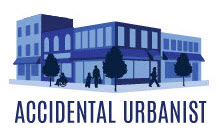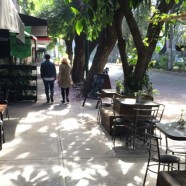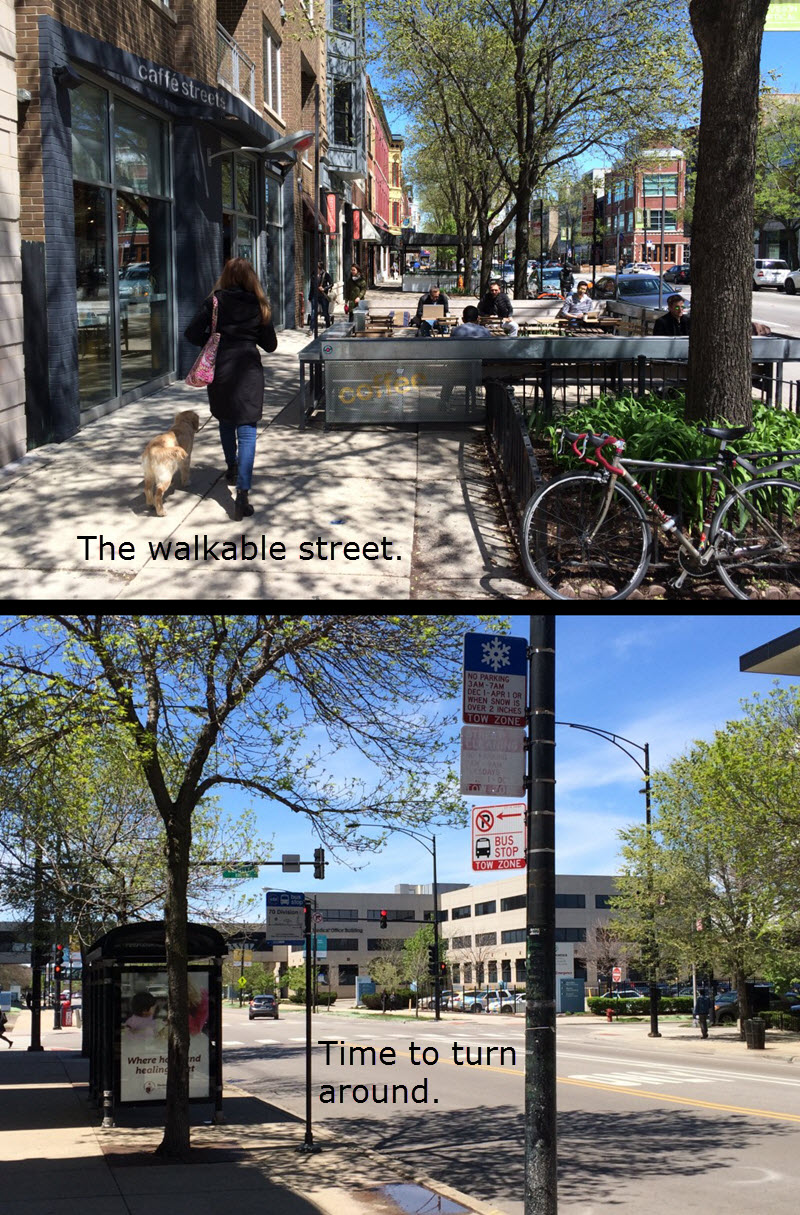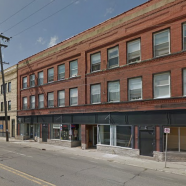What We Know in Our Bones
Walkability is something we understand in our bones. If you feel comfortable and happy on foot, congratulations! You’ve just discovered a walkable place.
The same is true of places that are hostile or unwelcoming to pedestrians: we respond instinctively and are physically repelled by these places. If you’ve ever been walking down a lively street, but stopped and turned around when you came to a blank wall, a drive-thru, a parking lot or other dead spaces, then you’ve experienced it too.
Like Justice Stewart’s famous quote about porn, walkability can be hard to define, but “I know it when I see it.”
We all do.
Read MoreParking Vs. The Walkable Building (The Developer’s Dilemma)
John Anderson (R John the Bad, if you read his blog) is a guy who spent years trying to convince developers to care about walkable urbanism. As it turns out, the “brain damage” wasn’t worth it. A better approach, he decided, was to teach urbanists how to be developers. Which is how I met him last summer at the Congress for New Urbanism’s “Rookie Developers Breakfast.”
I wasn’t the only wannabe who showed up. Overwhelming interest in the topic inspired the creation of a Facebook group called Small Developer / Builders and a series of “Small Developer Boot Camps” led by John, Monte Anderson, and other members of the Incremental Development Alliance.
The lessons they teach would make Jane Jacobs dance on the sidewalk. Start small, keep it simple, build incrementally, foster local tradesmen, provide places for entrepreneurs, take the long view, invest in your neighborhood, and improve it one building at a time.
With each project, you enrich the soil of your “farm,” making the entire area more desirable and livable for you and all your neighbors. Monte Anderson, who has worked this sort of magic in his hometown of Duncanville, TX, calls it “gentle-fication,” a process that brings the community up with you in a gradual and sustainable way.
If you’re a regular Strong Towns reader, this probably makes a lot of sense. After all, this is how cities were traditionally built. People invested in the communities where they lived. Owner-occupants made incremental improvements with the expectation that their legacy would provide lasting value over time. It was never about making hedge fund investors rich from 3rd quarter profits of commodified real estate packages.
This return to an old-fashioned ideal is one of the things that makes small-scale development so appealing—especially to folks like me who care about good urban form, walkable places, and revitalizing neighborhoods. With low overhead and smart choices, it’s actually possible to build desirable places that normal people can afford. These projects help provide crucial “missing middle housing” that the big developers with their high overhead costs simply can’t deliver.
As John Anderson likes to say, “If you’ve ever found yourself eyeing an empty lot and thinking ‘Somebody ought to…’ Well, maybe that someone is you.”
IMPORTANT LESSONS FOR THE SMALL-SCALE DEVELOPER
But there are a couple important lessons that every starry-eyed dreamer/developer must consider.
First and foremost: if you can’t get the rent, you can’t build the building. So when calculating whether or not a project will “pencil,” you start with average rents and construction costs for your area, and work your way backwards to see what’s feasible. Everyone has sexy dreams, but as a developer it’s important to maintain a long-term, monogamous relationship with math.
The second lesson? “Keep it simple.” This encompasses everything from using commonly available construction materials to taking advantage of FHA loans. It also applies to site selection: whenever possible, you want to build “by right” on land that is already zoned for what you want to do.
Unfortunately, this is where a terrific aphorism crashes headfirst into the painful rock face of reality. Because most local zoning codes are ideally suited to building car-oriented crap, they are perfect for folks who like to transform large parcels of land into parking lots, shopping centers, and chain restaurants with drive thrus. Far too often, they conflict with the type of small-scale, walkable places our ancestors would recognize as home.
In cities throughout America, the places we love the best are often illegal to build. If you don’t believe me, test out your hometown zoning code by “building” a project on paper.
KICKING THE TIRES OF YOUR LOCAL ZONING CODE
That’s exactly what we did at a recent Small Developers Boot Camp in Bentonville, AR. We were given a portfolio of development opportunities taken from real life in Kalamazoo, MI. Our package included descriptions of various lots with prices based on comps; a market study of rental rates for commercial and residential spaces; average construction costs per SF; the current zoning for each parcel; and a “plain English” summary of the applicable zoning code requirements. Thus, we were able to compare lots while taking into account market realities and the nitty-gritty zoning requirements that can make or break a deal.
 Our mission: Decide what we wanted to build, pick an appropriate lot where we could build it by right with current zoning, and use a pro forma to check the math and see if the project makes money.
Our mission: Decide what we wanted to build, pick an appropriate lot where we could build it by right with current zoning, and use a pro forma to check the math and see if the project makes money.
As aspiring small developers, we first looked for affordable, modest-sized lots, where adding a single building would help complete a missing piece of the neighborhood puzzle. This allowed us to quickly reject big, expensive parcels that were beyond our means.
A glance at the zoning code helped us dismiss other locations.
We wanted the option to build residential over commercial, but this was not allowed in several of the purely residential zoning districts. Minimum Lot Area Per Dwelling Unit (basically, how much land you need per residential unit) and setback requirements (how far back from a lot line you have to build) further limited our choices.
THE DEVIL IS IN THE DETAILS. IT’S ALSO IN TABLE 4.1-A OF YOUR LOCAL ZONING CODE
I have to say, the Minimum Lot Area requirements surprised me the most. We envisioned a compact, mixed-use building with up to three stories and six dwelling units combined with ground-floor retail. But even in a traditional neighborhood where the existing building stock matched our vision, we were limited to three residential units because of this arbitrary restriction.
We would have loved having those extra units, and I’m sure Kalamazoo would have appreciated the extra property taxes our ideal project could have generated—but the code said “no!” (Take that, local schools!)
Ultimately, we decided to test a two-story, mixed-use building with residential above retail, just like the adjacent older buildings, but smaller. For the purpose of our quick estimate, we assumed we would build three 800 SF residential units above 2,400 SF of commercial space on the ground floor, which could be divided into two or three separate storefronts if desired. It wouldn’t maximize use of the space, but it would fill in a “missing tooth” on what was once a lively, walkable street.
PARKING V. BUILDING
Next came off-street parking requirements–and the audible groans and outcries of our merry band of aspiring developers. The parcel we selected was zoned “Commercial Neighborhood” which included a lovely statement of intent: “to promote pedestrian-oriented development” and“encourage small-scale retail sales and personal services to primarily serve nearby residential neighborhoods.”
Of course, nothing says “pedestrian-oriented development” like a vast amount of off-street parking!
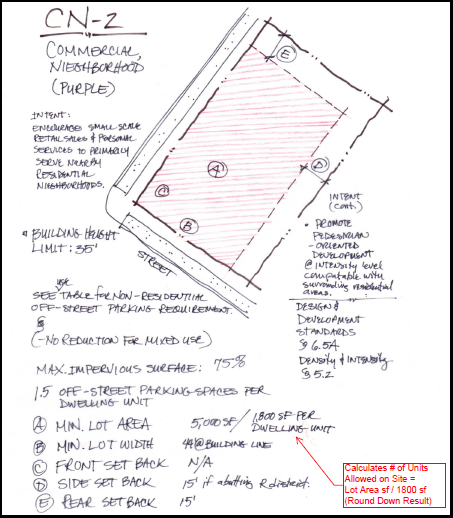 “Let’s make car storage the primary function of our city!” exclaims absolutely no one ever. Unfortunately, the zoning code does. Which is why most cities say they want walkability, but require a ridiculous amount of off-street parking.
“Let’s make car storage the primary function of our city!” exclaims absolutely no one ever. Unfortunately, the zoning code does. Which is why most cities say they want walkability, but require a ridiculous amount of off-street parking.
In our case, each one-bedroom unit required 1.5 off-street parking spaces. Thus, our three apartments needed five total parking spaces (of course, you have to round up). The commercial parking requirements were even worse. It was a moving target based on “use.” Would the commercial space be used as offices? Retail? A coffee shop, restaurant or bar? How could we even know? (None of us brought a Magic 8 Ball to the workshop.)
DOING THE MATH…
The commercial off-street parking requirements ranged from one space per 330 square feet of office floor area to one space per 100 square feet of restaurant. At a minimum, we would be required to provide 7 parking spaces for our 2,400 SF of commercial space. If a tenant wanted to use this space for a bar, we would need 24 parking spaces—because drinking and driving is oddly enshrined in most zoning codes.
All together (calculating residential and commercial) we would need parking for 11 to 29 cars for our little building. And since it takes about 300 SF of land for every parking space (which includes the stall plus associated drive aisles) we would need between 3,300 and 8,700 square feet of land dedicated solely to parking.
Did I mention that our parcel was only 6,752 SF? And we wanted to include a building?
After a lot of sketching and scratching of heads, we managed to fit our building and 10 parking spaces on the lot. Close, but no cigar in our attempt to fulfill the requirements of the zoning code and build “by right.” In real life, that single space we lacked would require a trip to the Board of Adjustment to beg for a variance.
I’LL TAKE PARKING FOR 100, ALEX…
Our story is not unique. Throughout the country, you’ll find zoning codes quite similar to those in Kalamazoo. Because it’s expensive and tedious to overhaul zoning ordinances, they tend to fossilize over time. Unfortunately, many of them appear to be trapped in a geologic formation that includes beehive hairdos, transistor radios, and the 22-volume 1971 World Book Encyclopedia.
Thus, zoning ordinances still require off-street parking to “lessen congestion in the public streets” as if promoting auto travel is a scientifically proven method for eliminating traffic. And while some cities are beginning to reduce off-street parking ratios, only a brave minority have taken the plunge to eliminate them altogether.
So even if those parking spots aren’t needed, they are required. Which basically sucks for everyone except the guy who lays the asphalt. It limits the ability of developers to build small-scale infill projects that contribute to walkable neighborhoods. It incentivizes driving, while punishing people who walk, bike and use transit. And it dilutes property tax revenues because asphalt is never the highest and best use of land.
You’d think this problem would be easy to fix. But if you’ve ever doubted that the pen is mightier than the sword, just try to change a few words in your local zoning code. People will show up in force to protect the status quo as if defending against a zombie apocalypse.
Which is funny, because most folks don’t have a clue what the zoning code actually says or how it impacts their daily lives.
Reading your local zoning ordinance is a powerful soporific; it will induce sleep faster than a Benadryl with bourbon. But it is also, literally, the law of the land—a regulatory document that determines how buildings, neighborhoods and cities will evolve over the coming decades.
If you care about your city’s future, you care about the zoning code.
If we want that future to include small-scale, incremental development that creates walkable places, while building local wealth and improving traditional neighborhoods, we need to make sure our zoning codes enable that vision.
It might be time for a review. Grab a coffee and a copy of your zoning code, and get busy!
Read More